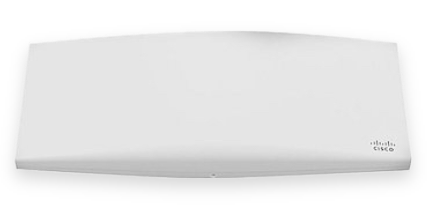
Meraki Wireless is the most intuitive network connection solution to deploy, configure, and manage — all while gathering dynamic analytics for a more innovative and safer network. Every Meraki wireless access point (AP) simplifies use, increases capacity, gives greater coverage, and requires little support.
Why wireless? These access points are perfect for connections where physical cables are difficult or inconvenient. Because mobile devices benefit from wireless access points, users can freely roam around the indoor and outdoor areas of a building without losing connectivity strength. Since wireless Meraki operates through a centralized network management ecosystem, administrators also enjoy many conveniences, such as hands-free configuration for every new Meraki wireless access point and automatic deployments across the network.
Build reliable web network solutions that utilize Meraki wireless access point models and other hardware.
Stratus Information Systems can help you determine the type of Cisco Meraki wireless access point that’s best for your business, how many you need, and where they should be installed.
Meraki wireless features like Layer 7 Application QoS, Location Analytics, RF Optimization, and Wireless Health offer unparalleled visibility and control over all the access points in an organization via a centrally-managed cloud dashboard. This allows Meraki to intelligently analyze wireless networks, visualize trends, and detect network anomalies.
The unparalleled visibility allows IT staff to quickly identify troubling patterns and problematic clients, proactively mitigating issues before they become full-scale emergencies.
It’s challenging to implement central management protocols and achieve your wireless web network solutions goals when your existing infrastructure is difficult to scale, doesn’t automate deployment, or isn’t wholly centralized. A lot of time and resources can go into supervising daily activities, and the workload can quickly bloat when it’s time to renew licenses, reconfigure devices, add or manage users in newly established access points, etc.
Wireless Meraki is the solution to these problems. Central management and deployment are more accessible because the centralized, cloud-managed architecture allows campus-wide WiFi deployments, provide secure connectivity, network-wide visibility and granular control, and automates firmware and licensing updates across networks and organizations.
The best part is that administrators can do all this without leaving the office. Management and deployment can be completely zero-touch and remote, saving time and resources traveling from one site, one building, to another. They can configure and monitor Meraki wireless access point models anytime and anywhere.
The Meraki dashboard is one of the brand’s biggest strengths. Managing Meraki wireless APs and other devices is easy to use technologies that use browser-based interface. Administrators can quickly toggle network views from country-wide to city-wide and zoom further to view every AP device hooked up to a network in an office building in another country. This makes Meraki Wireless ideal for organizations that oversee multiple or international locations.
Cisco Meraki has done an impressive job of maximizing the cloud to develop functionalities that offer significant advantages to its users.
A Meraki WiFi access point placed indoors acts as a portal for devices to connect to an extended local area network. If you find slow connections around the office or if your organization is adding staff, this is the answer to maintaining strong WiFi coverage.
Even with no IT experience, Indoor WiFI access points can be set up in minutes. This “plug-and-play” wireless access point solution allows small businesses to deploy budget-friendly networking without having to compromise speeds.
An outdoor Meraki WiFi access point extends the strong wireless network into the areas surrounding your worksite. This includes breezeways, patio areas, smoking zones, and parking lots.
Meraki Outdoor WiFi access points feature the same radios and throughput as the GR10, with the addition of being ruggedized. The GR60 is built to stand up to the elements, including rain and dust.

Stay informed about our newest releases and updates